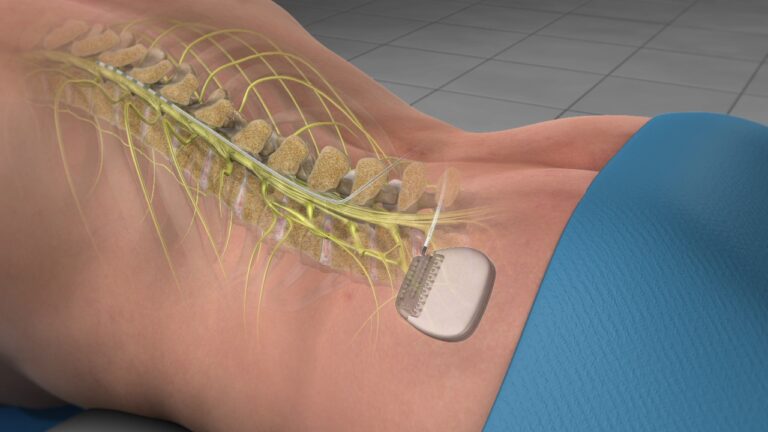
Introduction
Chronic pain affects millions of people globally, interfering with daily life, mood, sleep, and overall well-being. While medication and therapy play a vital role, regular physical activity is one of the most effective non-pharmacological tools for managing chronic pain. In 2025, medical research continues to confirm the powerful impact of exercise in reducing pain and improving quality of life for individuals with long-term conditions.
Why Exercise Matters in Pain Management
Chronic pain often leads to reduced mobility and a fear of movement, causing muscle stiffness, joint problems, and deconditioning. This can create a cycle where inactivity worsens pain over time. Exercise breaks this cycle by:
- Improving blood circulation
- Reducing inflammation
- Releasing endorphins (natural painkillers)
- Enhancing joint flexibility
- Strengthening muscles that support the body
Types of Exercises That Help with Chronic Pain
1. Aerobic Exercise
Low-impact cardio activities like walking, swimming, and cycling boost stamina and cardiovascular health without putting too much stress on joints.
2. Strength Training
Light weightlifting or resistance band exercises help rebuild weak muscles, offering better support to painful areas like the back, knees, and shoulders.
3. Flexibility and Stretching
Stretching routines, yoga, and Pilates improve range of motion and reduce stiffness. These are especially beneficial for conditions like arthritis and fibromyalgia.
4. Mind-Body Exercises
Practices such as Tai Chi, Qigong, and yoga combine movement with breathing and mindfulness, which help in both physical relief and stress reduction.
Scientific Evidence Supporting Exercise for Pain
- Studies in 2025 have shown that 12 weeks of moderate exercise can significantly reduce pain symptoms in patients with osteoarthritis, chronic lower back pain, and fibromyalgia.
- MRI imaging reveals that regular physical activity improves brain function and reduces pain perception by altering pain-processing centers.
- Research also shows that exercise improves sleep, which is crucial for healing and pain control.
Safety Tips for Exercising with Chronic Pain
- Consult a healthcare provider before starting any routine.
- Start slow and increase intensity gradually.
- Warm up and cool down to prevent injury.
- Listen to your body—avoid overexertion.
- Use adaptive tools or equipment (like resistance bands, support braces) if needed.
Customized Exercise Plans for Common Chronic Pain Conditions
| Condition | Recommended Exercises |
|---|---|
| Osteoarthritis | Swimming, light walking, chair yoga |
| Fibromyalgia | Tai Chi, low-impact aerobics, stretching |
| Chronic Back Pain | Core strengthening, Pilates, water therapy |
| Neck & Shoulder Pain | Posture exercises, resistance band workouts |
| Sciatica | Hamstring stretches, back extension moves |
When to Avoid Exercise
- During a pain flare-up
- If you have unexplained swelling or redness
- In cases of severe fatigue or dizziness
Always check with a healthcare provider if unsure about your limits.
Benefits Beyond Pain Relief
Exercise not only reduces pain but also:
- Enhances mood and reduces anxiety or depression
- Improves energy levels
- Boosts immune function
- Strengthens cardiovascular health
- Encourages independence and better daily functioning
Conclusion
In 2025, the role of exercise in chronic pain management is more important than ever. With personalized routines and consistent movement, individuals can take control of their pain and lead healthier, more active lives. While it’s not a cure, exercise is a powerful, low-cost, and drug-free strategy that complements other treatments and improves long-term outcomes.
Frequently Asked Questions
1. Can exercise really reduce chronic pain?
Yes. Exercise improves blood flow, releases endorphins, and strengthens muscles, all of which help reduce pain naturally.
2. What’s the best time to exercise if I have chronic pain?
Many people find morning workouts effective because stiffness is higher after waking up, and movement helps loosen joints.
3. How often should I exercise for pain management?
Aim for 3–5 days a week with low to moderate intensity for the best results.
4. What if exercise increases my pain?
Mild soreness is normal, but sharp pain is not. Consult your doctor or physical therapist to adjust your routine.
5. Is walking enough to help with chronic pain?
Yes, walking is a great low-impact aerobic exercise that can improve circulation and reduce pain, especially in arthritis and lower back pain.





